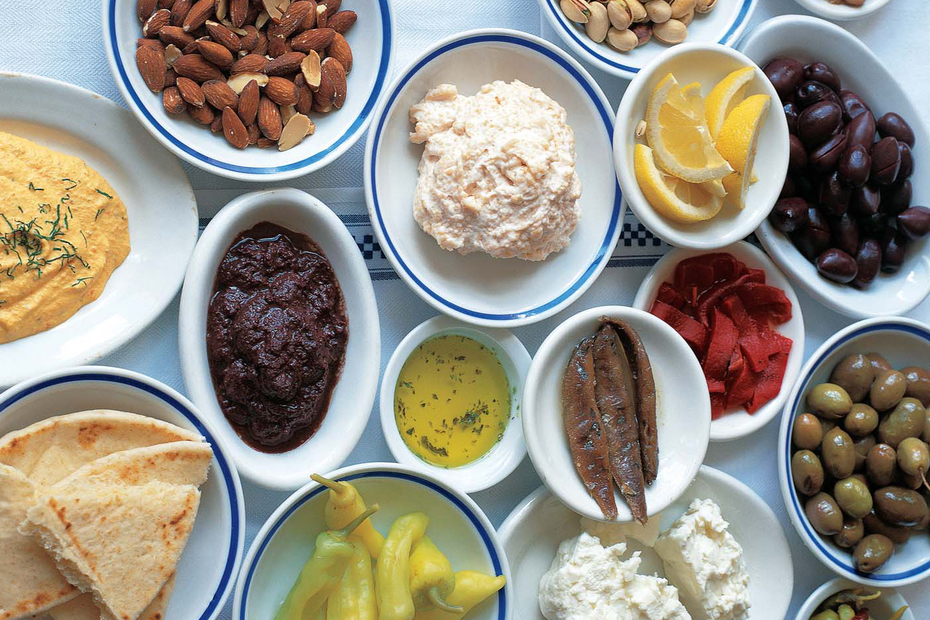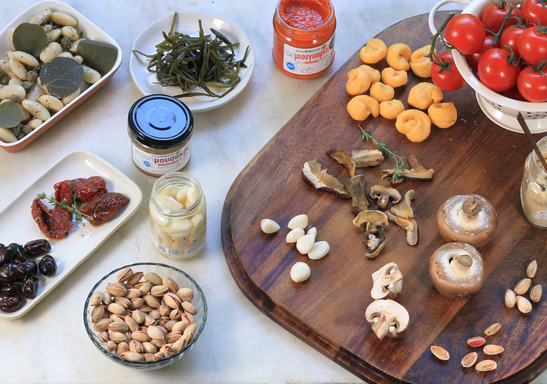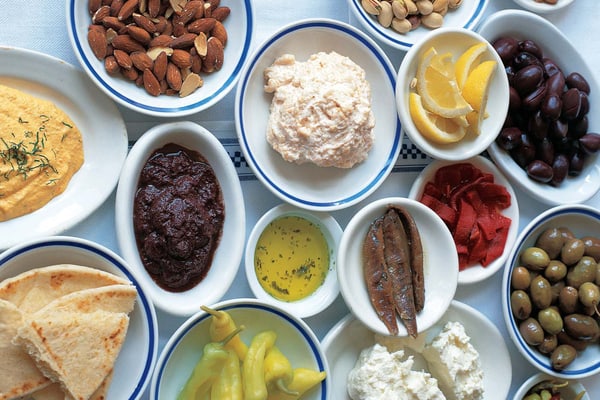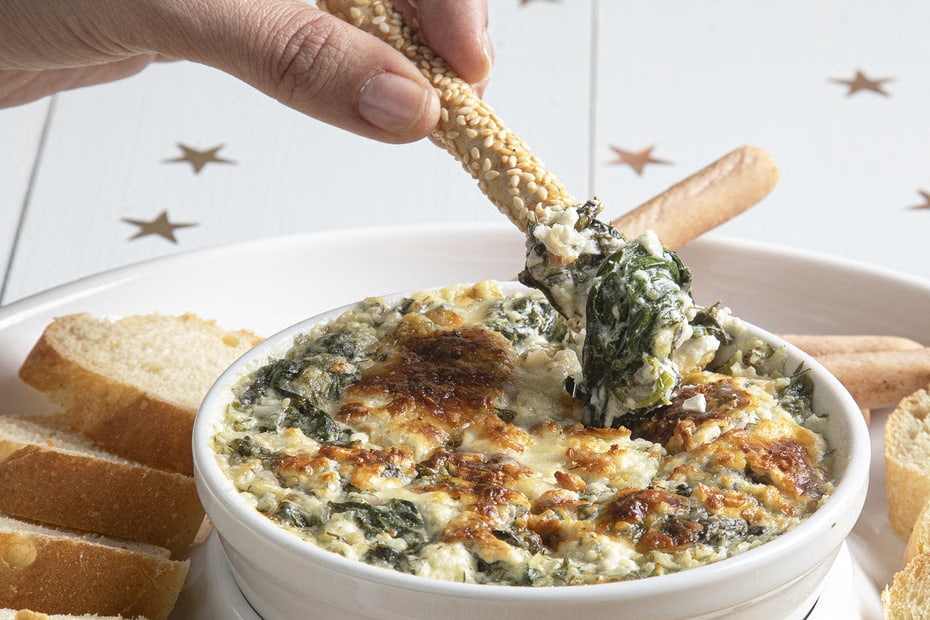Greek Meze Primer
All over the Mediterranean, small, savory plates of food enjoyed in a convivial atmosphere make for one of the region’s basic dining experiences. Known widely now as tapas, antipasto, merende, even hors d’oeuvres, these tidbits comprise a whole pan-Mediterranean culture: that of sharing food and drink with friends in an unrushed, unharried environment.
In Greece (and throughout the eastern Mediterranean, from Turkey to Syria) meze–or mezze and maza, respectively–is a way of life that traces its roots to the beginnings of recorded history. The tradition is deeply rooted and is an expression of something Greeks hold dear: socializing (i.e. talking) over a few plates of simple, tasty food, letting the wine or spirits flow, and savoring the liberating, gratifying effects of the two together. Greeks never drink without eating, and seldom eat without at least a glass of wine.
The word itself means “middle,” as in middle of the day, or between meals, because the meze table is not and should not be a full meal. Rather it is something that falls in the middle of the day or before dinner.
The meze table is one of the most delicious and accessible in the whole repertoire of foods that make up Greece’s robust cuisine. Variety is a key element–mezedes (pl.) are always a potpourri of flavors, textures, temperature and spice. The whole point is to excite the palate in small bites that burst with flavor.
What Comprises a Meze?
Almost anything can be served as a meze, from a simple plate of olives, slated cucumber and bread to robust preparations such as fried hot peppers, savory dips, or even yesterday’s leftover dinner served in a small portion and meant to be shared.
Generally, however, the type of meze served will depend on the type of alcohol being imbibed. For example, o uzo and its less fragrant counterpart tsipouro call for foods that are intensely flavored, such as pickled vegetables, strong cheeses, olives, garlicky dips and spreads, and salted fish. These would be absolutely the wrong types of foods to serve with wine, however. Here, the mezethes tend to be milder—culled from the wide range of Greek savory pies, fragrant meat and poultry dishes, and delicious table cheeses.
Mezethopoleia—the Meze Restaurant
Every household in Greece always has a little something on hand to serve to an unexpected guest, but the heart and soul of meze cooking is to be found i n the restaurants. Indeed, there is a whole category of eateries called mezethopoleia—meze restaurants. The best are in the Greece’s second capital, Thessaloniki, as well as in Volos. It is not by accident that the meze tradition has been a vibrant one in both these cities for decades; in both Salonika and its environs as well as in Volos and its neighboring communities, ouzo and tsipouro (something akin to Greek grappa) are traditionally produced. Both are liqueurs that call for the accompaniment of strong-flavored foods and both are drinks th at are enjoyed almost exclusively with company.
In and around the marketplace in Thessaloniki, mezethopoleia abound. Here one is likely to find dishes such as savory eggplants rolled with ground meat; roasted peppers; spicy feta cheese spreads; smoky eggplant salads; a whole bevy of salted fish, one of the classic types of meze, since salty food goes so well with strong drinks.
In Volos the tradition evolved a little differently, and here meze are served in a unique, strictly local way. Usually, a mezethopoleio will have dozen of different dishes prepared every day and usually people do not order. Instead, they leave the meny up to the discretion of the owner or chef, who sends out a different small plate with each new round of local fire water.
Meze in Athens
In Greece’s capital the tradition of savoring mezethes is very much alive and on any given day of the week in mid afternoon the city’s downtown mezethopoleia are packed with working people either taking a break or making a quick stop before heading home to a proper midday meal. In the suburbs, mezethopoleia tend to be more like bonafied restaurants, slightly more gentrified. In all these places however, the atmosphere is casual and jovial.









